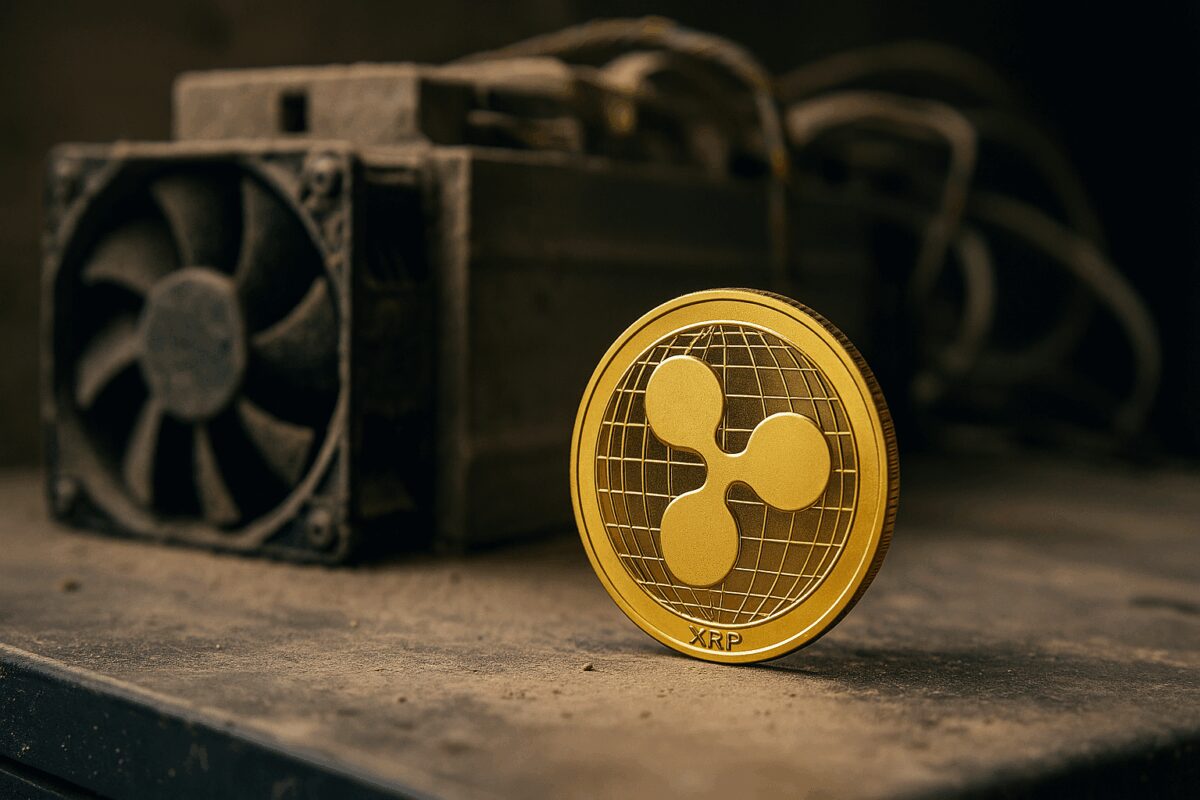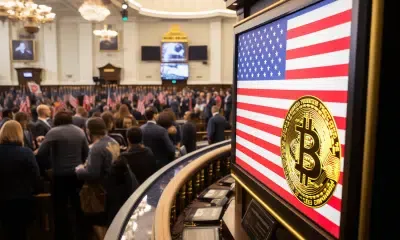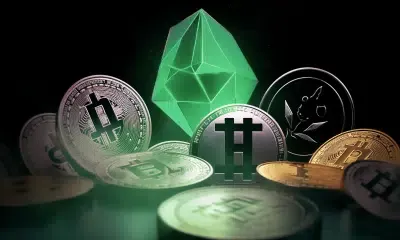
For loads of digital currencies, “mining” is a really big deal; it’s how transactions get confirmed, the network stays secure, and new coins are made. People doing this, usually known as miners or validators, throw in computing muscle or tie up their own crypto holdings to put forward new bunches of transactions (called blocks) and tack them onto the blockchain.
When you get down to it, mining is what keeps the transaction record honest and safe without any one group in charge. Since there’s no central bank or anything like that, mining gives a spread-out network a way to agree on what’s a real transaction and what’s not, stopping problems like someone trying to spend the same money twice. But can you mine XRP, or does it work in a totally different way?
How Mining Mostly Works: PoW and PoS
Two main ways of agreeing on things underpin how most cryptocurrency mining happens: Proof-of-Work (PoW) and Proof-of-Stake (PoS).
Proof-of-Work (PoW): The Computer Power Challenge
Bitcoin, the original cryptocurrency, kicked off PoW. With this method, “miners” race each other to solve complicated crypto puzzles, which takes special computers and a ton of processing oomph.
- How it Goes Down: Miners grab a bunch of waiting transactions, bundle them into a block, and then try to be the first to find a “nonce” – a particular number. If you take this nonce, mix it with the block’s information, and run it through a special math function (a hashing algorithm), the answer has to fit certain rules. The miner who first cooks up this “proof of work” gets to add their block to the blockchain.
- Keeping the Network Safe: Because it takes so much computer power, it’s just too expensive for crooks to try and overwhelm the network or mess with the blockchain. To successfully attack a PoW network, someone would have to control more than half (51%) of all the mining power on the network – that’s a huge hurdle. Miners have a good reason to play fair; if they try to approve fake transactions, the network will just reject their work, and they’ll miss out on any rewards.
- Making Transactions Official: Miners check transactions by making sure they’re legit, the sender actually has enough money, and then they pack them into the blocks they’re trying to add. Once a miner solves the puzzle, other folks on the network double-check the solution before the new block is officially locked in.
- New Coins Being Born: For all their work keeping the network secure and checking transactions, successful PoW miners get paid with brand-new cryptocurrency (like fresh Bitcoin) plus any fees from users whose transactions were in that block. This whole reward setup keeps people wanting to participate.
Proof-of-Stake (PoS): Betting Your Own Money
PoS came along as a way to do things that didn’t guzzle so much electricity like PoW. Instead of raw computer power, PoS has “validators” who “stake,” or lock up, their own crypto coins as a kind of security deposit for a shot at being picked to create the next block.
- How it Goes Down: Validators get chosen to suggest new blocks based on a few different things, often how much they’ve staked and how long they’ve kept it staked. Usually, the more you stake, the better your odds of being picked. After a validator puts up a block, other validators can then confirm it looks good.
- Keeping the Network Safe: The security in PoS comes from the fact that validators have their own money on the line to act honestly. If a validator tries to okay a bogus transaction, their staked crypto could get taken away (or “slashed”). That makes trying to attack the network pretty expensive. Many think PoS is less likely to suffer a 51% attack than PoW because the rewards for such an attack just aren’t as tempting for a validator.
- Making Transactions Official: Just like with PoW, PoS validators have to check transactions and put them into new blocks. The validator who gets picked confirms transactions, suggests a new block, and then other validators check that block.
- How Rewards Get Shared: PoS validators usually get paid with transaction fees for the blocks they approve and, sometimes, newly created coins. But it’s not quite like PoW’s direct “block reward” for solving a puzzle. Rewards are often handed out based on how much each validator has staked.
These systems are absolutely vital for network safety, making sure transactions are valid, and often for creating new coins. They’re pretty much the engine room for a lot of digital currencies that don’t have a central authority.
So, Can You Actually Mine XRP?
The short and sweet answer is no, you can’t mine XRP the way you’d mine something like Bitcoin. That’s just how XRP was designed from the get-go, because of how it was first created and the way the XRP Ledger (XRPL) agrees on transactions.
The XRP Ledger’s Way of Agreeing: No Mining Needed
Unlike Bitcoin’s Proof-of-Work, where miners crunch complex math problems to check transactions and make new coins, the XRP Ledger uses a totally different system to reach agreement, and it doesn’t use mining whatsoever.
- All Coins Made at the Start: Every single one of the 100 billion XRP tokens that will ever be around was created right when the XRP Ledger started back in 2012. New XRP isn’t made through any ongoing mining process; the total amount is set, and it actually goes down slowly as tiny bits are “burned” (destroyed) with every transaction fee.
- Agreement by Validators: The XRP Ledger counts on a network of independent computers, called “validators,” to agree on the order of transactions and whether they’re valid. These validators are picked because they’re trustworthy and reliable. They look at proposed transactions and reach an agreement every 3 to 5 seconds. For any transaction to be confirmed and put on the ledger, a big majority (at least 80%) of these trusted validators have to agree. This whole system is called the XRP Ledger Consensus Protocol (XRPL CP), though you might sometimes hear it called things like Federated Byzantine Agreement (FBA).
- Validators Don’t Get Paid Directly for This: The people running XRP Ledger validators don’t get XRP rewards just for helping the network agree on things. Usually, they do it because they have a good reason to want the network to be healthy and stable, often because they’re businesses or people who use or support the XRP Ledger. That’s a big difference from PoW miners, who are driven by block rewards and transaction fees.
- Saves a Lot of Energy: One really great thing about this design is how little energy the XRP Ledger uses. The agreement process doesn’t need tons of computing power, so it’s way kinder to the environment than PoW mining.
How XRP Came To Be: What “Pre-Mined” Means
A few developers—David Schwartz, Jed McCaleb, and Arthur Britto—first dreamed up the XRP Ledger and its coin, XRP, starting around 2011. They wanted to make a digital money specifically for payments that would be faster, cheaper, and could handle more volume than Bitcoin. Chris Larsen joined them later, and in 2012, they started the company we now know as Ripple.
When the XRP Ledger went live in June 2012, all 100 billion XRP were created instantly. Here’s how this “pre-mined” batch was initially split up:
- 80 billion XRP went to Ripple: The founders gave 80% of all the XRP to their company (which was called OpenCoin back then, now it’s Ripple). The idea was this XRP would help pay for the company’s work, get more people to use the XRP Ledger, and find ways for XRP to be useful.
- 20 billion XRP for the Founders: The co-founders kept the other 20 billion XRP for themselves.
To ease worries about too much XRP hitting the market at once and to make things more predictable, Ripple later put a very large amount of its XRP (55 billion of them) into a special, cryptographically locked-up account called an escrow. This escrow lets out 1 billion XRP every month. If any of that billion isn’t used in a month, it goes back into a new escrow, which just means the whole release process gets stretched out longer.
If You Can’t Mine It, How Do You Get XRP?
Since mining XRP isn’t an option, if you want to get your hands on some, you’ll have to go about it differently:
- Buy it on an Exchange: The usual way is to buy XRP from a cryptocurrency exchange. Lots of exchanges around the world let you trade regular money or other cryptos for XRP.
- Mine Other Cryptos, Then Swap: Some folks might mine other cryptocurrencies (like Bitcoin or Ethereum) and then trade those for XRP on an exchange. This is a roundabout way and isn’t actually mining XRP itself.
- Get Involved in the Ecosystem: While it’s not “mining,” you might be able to get XRP or related tokens by participating in the XRPL world – maybe by developing things, helping provide trading liquidity on its built-in exchange, or working with projects built on the XRPL. These routes, though, come with their own ways of working and different kinds of risks.
Why All the Confusion? Some Common Mix-Ups
The mistaken idea that you can mine XRP often comes from people thinking “mining” is just how all cryptocurrencies are made or how their transactions are handled. It’s really important to understand that XRP’s setup is quite different.
- Ripple Isn’t XRP: You’ve got to keep Ripple (the company) separate from XRP (the digital coin). Yes, Ripple uses XRP in some of its products (like its On-Demand Liquidity service outside the U.S.), but XRP and the XRP Ledger are their own things, separate from Ripple. Ripple can’t just control the XRP Ledger by itself or make more XRP.
- Validators Aren’t Miners: Even though validators are super important for how the XRPL works, their job is to help the network agree on things, not to “mine” in the way that gets you rewards like in other systems.
XRP’s Money System and Network Strength
The fact that XRP was “pre-mined” and uses validators to agree on things is at the heart of how its finances work and how it stays secure.
- A More Predictable Supply: That escrow system for Ripple’s XRP stash gives some idea of when new XRP might enter the market. The total amount of XRP is fixed and actually shrinks a little over time as tiny bits are destroyed with transaction fees, which is meant to keep inflation in check.
- Network Security Without Mining: The XRP Ledger’s safety depends on a large majority of trusted validators all agreeing. The whole system is built to be tough against problems like double-spending (someone trying to spend the same money twice) and Sybil attacks (where an attacker tries to gain power by creating lots of fake identities). The small cost for transactions (a tiny bit of XRP that gets burned) also helps stop spam and attacks aimed at shutting down the network.
- The Decentralization Question: Just how decentralized the XRP Ledger really is has been a hot topic, especially with Ripple holding so much XRP and the role of Unique Node Lists (UNLs)—which are basically lists of validators that servers decide to trust. While Ripple itself only runs a few of the network’s validators, and anyone can run a validator and pick their own UNL, relying on these lists for agreement is different from how Bitcoin’s mining works, which is more open to anyone joining.
What XRP Does Well: Speed, Capacity, and Being Green
The way XRP and its ledger were designed gives them some real pluses:
- Quick Transactions: Deals on the XRP Ledger usually get confirmed in just 3-5 seconds, which is a lot faster than many PoW-based blockchains.
- Handles Lots of Traffic: The network is built to manage a high volume of transactions, claiming it can do up to 1,500 every second (TPS).
- Tiny Transaction Fees: It costs very little to make transactions on the XRP Ledger, usually just fractions of a penny.
- Energy Sipper: Because there’s no mining, the XRP Ledger is incredibly energy-efficient, a big difference from the environmental headaches linked to PoW cryptocurrencies.
The Legal Side: Ripple’s Big Case
Ripple Labs has been tangled up in a legal fight with the U.S. Securities and Exchange Commission (SEC) since way back in December 2020. The SEC claimed Ripple broke the law by selling XRP without registering it as a security.
Some important things came out of that case, like a ruling in July 2023 where Judge Analisa Torres decided that when Ripple sold XRP through regular public exchanges, it wasn’t like offering or selling investment contracts (securities). However, when Ripple sold XRP directly to big institutions, those were seen as securities deals. This complicated decision really shook up how people thought about XRP and how the whole crypto industry looks at staying on the right side of the law. There was talk in early 2025 about a possible settlement, which could make XRP’s legal status in the U.S. even clearer.
XRP in Use: What It’s For
XRP is mostly made for making international payments fast and cheap, and for acting as a “bridge” currency between other currencies. Ripple’s On-Demand Liquidity (ODL) service uses XRP for this in many parts of the world. The XRPL can also do other cool things, like creating digital tokens (tokenization), supporting decentralized finance (DeFi), and maybe even helping issue Central Bank Digital Currencies (CBDCs). Ripple has actually been working with central banks on trial runs for CBDCs.
To Sum It Up: You Can’t Mine XRP, That’s a Myth
So, when all is said and done, the idea of “mining XRP” just isn’t right. The way the XRP Ledger is built, with all its coins created at the start and validators agreeing on transactions, is fundamentally different from cryptocurrencies that depend on mining. This design is all about being efficient, quick, and keeping transaction costs low, making XRP a special kind of digital money built for particular jobs in the financial world. Getting this distinction is really important if you want to understand XRP’s place and what it might do in the always-changing landscape of digital money.




